| |
INTRODUCTION : What
are the various components of your PC? What are their specific
functions? Well, this quick look under the hood will show you
all you need to know.
|
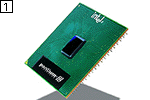 |
THE PROCESSOR : The
computer you are using to read this page uses a processor to
do its work. The processor is the heart of any normal computer,
whether it is a desktop machine, a server, or a laptop. Whether
you are playing games or creating a spreadsheet file, the processor
coordinates the flow of information between the various components
of your system. It performs mathematical operations and works
on various kinds of data. Processors are identified by their
interface, their brand and also by the price range they fall
under. |
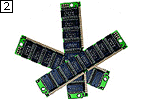 |
RAM : Next to
the CPU itself, RAM is the most important factor in computer
performance. If you don't have enough, adding RAM can make more
of a difference than getting a new CPU. The RAM is where data
is stored before the processor or any other component accesses
it. This memory is volatile because its contents are lost each
time you switch off your computer. But you can access the data
stored here at a very fast rate compared to any other storage
system.
RAM is fabricated in the form of 'sticks' that contain the memory
chips, which are inserted into the motherboard of your computer.
RAM is identified according to its type, its speed and its interface. |
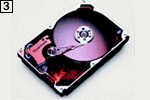 |
HARD DISK DRIVE :
Hard disk drives are storehouses of information that hold
all the programs and data in your computer. These devices are
constructed out of platters known as disks, upon which data
can be stored. As these platters spin, read-write heads access
the information on the platters. Therefore, hard disks are a
combination of mechanics as well as electronics. One important
feature of a hard disk drive is that it does not lose information
even after the system is powered down. Hard disks are identified
by their interface, spindle speed and storage capacity. |
 |
MOTHERBOARD : The
motherboard is the very foundation upon which your computer
system is built. It is used as a physical and electronic foundation
to interconnect the various components in your computer system.
It consists of various sections where different types of hardware
can be connected-the processor interface, the RAM slots, the
IDE (hard disk/CDROM) connectors, the expansion slots and other
integrated peripherals. Integrated peripherals are devices that
are directly built into the motherboard to add functionality
and to reduce your total system cost. Motherboards are identified
according to the types of processors they support, their size
and the chipset used in them. |
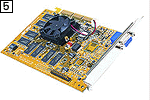 |
GRAPHICS CARD : Since
the early days of personal computers, most graphics cards have
been translators, taking the fully developed image created by
the computer's CPU and translating it into the electrical impulses
required to drive the computer's monitor. All cards today also
feature some form of 3D acceleration, which is a specialised
functionality that speeds up the display of 3D images and objects-the
kind that are found in games and other applications. With this
card, special effects like fog, mist and other environmental
and lighting effects can also be simulated. The basic components
of a graphics card are the processor, the video RAM and the
interface. Graphics cards are identified by the graphics processors
they use, their interface and the amount of video RAM they feature. |
 |
CD-ROM / DVD DRIVE
: The CDROM / DVD drive is used to run data, video and audio
disks. These devices consist of a mechanical assembly that spins
the CD (or DVD) disk and the information on these disks is read
optically. This is done with the help of a fine laser beam that
detects the digital information that is encoded onto the surface
of the disks. This laser beam assembly moves in a manner that
is similar to that of a record player -radially from the center
to the outer edges. The differentiation between CD and DVD drives
is in the amount of data that can be stored on the disks. This
varies from 650 MB for CD-ROMs up to 17 GB for DVD disks. CD
and DVD drives are classified according to their interface and
the maximum speed of the drives. |
 |
FLOPPY DRIVE : Floppy
drives are one of the few devices that have managed to last
it out ever since the first computers were created. This is
a storage device that became very popular simply because of
its large installed base and ease of use. It stores information
on disks that can carry 1.44 MB of data and are available in
a 3.5-inch form factor. Its predecessors were much larger and
could store lesser amounts of data and were therefore discontinued.
They work on primarily the same principles as that of a hard
disk - though on a much smaller and slower scale. |
 |
MONITOR : The
monitor is a display system that works in very much the same
manner as your television at home. The major component in a
monitor is the picture tube that contains a phosphor screen
and three electron guns that fire a continuous stream of electrons.
When these electrons hit the phosphor screen, it glows and an
image is produced when the entire screen is scanned continuously
from top to bottom. Monitors are specified by their screen sizes
and also by other factors like the maximum resolution that it
supports. Newer display systems are now available in the form
of TFT and LCD monitors that use the same principles as that
of your digital watch. |
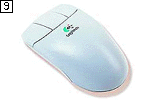 |
MOUSE : The mouse
is the device that lets you point the cursor to any part of
the screen in a graphical operating system like Windows. The
main parts in most mice are two little rollers - one on the
X-axis and the other on the Y-axis. At the base of the mouse
there is a ball that comes into contact with these two rollers.
When you move the mouse over a surface, the movement of the
two rollers is converted into digital information that decides
the direction and rate of movement of the cursor.
Now, we have optical mice which have a little camera built into
the base, that 'sees' the movement of the surface underneath
the mouse. This allows greater accuracy and precision in moving
the cursor. Mice are identified according to their interface
and the technology that they use. |
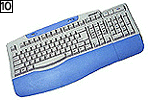 |
KEYBOARD : The
keyboard is an input device that lets you type information into
your computer. It basically consists of switches that, when
pressed, send a code to the computer that corresponds to the
character pressed. The basic components of a keyboard are the
array of switches and a chip in the keyboard that continually
scans for any keys pressed. This chip also sends the corresponding
code to the computer depending upon the key presses. Keyboards
are classified according to the technology that is used to construct
the keys, like membrane switches or mechanical switches, and
also according to the number of keys it contains. The keyboard
connects to the PS/2 port at the back of your computer or even
to the USB port as seen in the newer keyboards. |
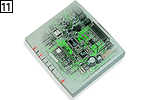 |
MODEM : The modem
connects your computer to the outside world. The word modem
is derived from the words MOdulator-DEModulator and it describes
the way in which the modem works. Since modems use the phone
line to transmit and receive information, it has to convert
digital signals from your computer to analog tones that can
be transmitted by the telephone line and vice versa. Modem speeds
range from 9.6 kBits/s, which are the slowest, to 56 kBits/s,
the faster ones. The fastest are Cable modems which blaze at
anything between 3 - 50 Mbits/s, depending upon the cable distance.
Modems connect to your computer via the serial port or USB port
and also incorporate additional capabilities like fax and answering
machine features depending upon the software bundled with it. |
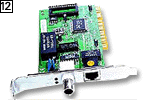 |
LAN CARD : The
LAN card enables you to link your computer to other computers
using a network. Usually available as PCI cards, the LAN card
plugs into your computer and upon configuration lets you share
files and use other resources, such as printers, in a network.
It is most often found in office computers where information
needs to be shared. Depending upon the network interface they
support, there are basically two types of network cards available
- coaxial or UTP. Coaxial is similar to the cable that lets
you view cable TV at home and the UTP LAN card is a smaller
wire that enables faster data transfer and ease of connectivity. |
 |
SOUND CARD : Sound
Card is the device that lets you hear all those MP3 songs and
sound effects from your games. This card plugs either into a
PCI or ISA slot and converts information sent to it into audio
signals that are eventually used to drive external speakers
or headphones. Soundcards also feature additional connectors
that let you interface external audio equipment like microphones,
musical devices, joysticks etc. Newer soundcards also have more
exotic features like four-channel support for surround sound,
audio processing for simulating audio effects and generating
soundstages like cinema, concert hall and arena effects.
 |
| |
|